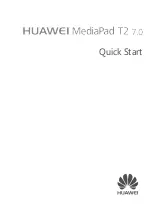
5
The JMW Scout does not have a built-in tracking force gauge but a Stylus Force Gauge
is supplied with your arm on a new unit. Place the stylus on the lower flat section of
the digital gauge and using the counterweight set the tracking force to the cartridge
manufacturer recommendation plus 1/10 of a gram more. We always recommend
going to the high side when it comes to tracking force. High frequency vibrations can
cause a light-tracking cartridge to cause more damage to the grooves than running a
cartridge at a heavy setting.
The JMW Scout arm has vanishingly low friction and will move very easily, be careful.
VERY IMPORTANT: MAKE SURE THE TONEARM IS PARALLEL TO THE PLATTER WHEN
SETTING THE TRACKING FORCE. IF IT IS NOT THE END RESULT WILL BE HIGHER OR
LOWER VTF THAN YOU WANTED.
Recheck the azimuth and the VTF at least twice to make sure they are correct. A little
extra time here will result in better sound. Make sure you do not go light on tracking
force that is a really bad idea!!!
D. ANTI-SKATING:
Anti-skating is one of the least understood forces acting on a tonearm. Skating force is
created by friction between the stylus and the record, causing a force vector in a
direction towards the center of the record when the headshell of the tonearm has an
offset angle. Putting a stylus down on a flat, groove less record will cause the arm to
move toward the center of the record. Arm manufacturers have tried to compensate
for this force, but that is impossible because the force is constantly changing as the
music and velocity change.
VPI has conducted careful listening tests and determined that every tonearm we tried
sounded better with its mechanical anti-skating disabled and the tracking force very
slightly increased.


























